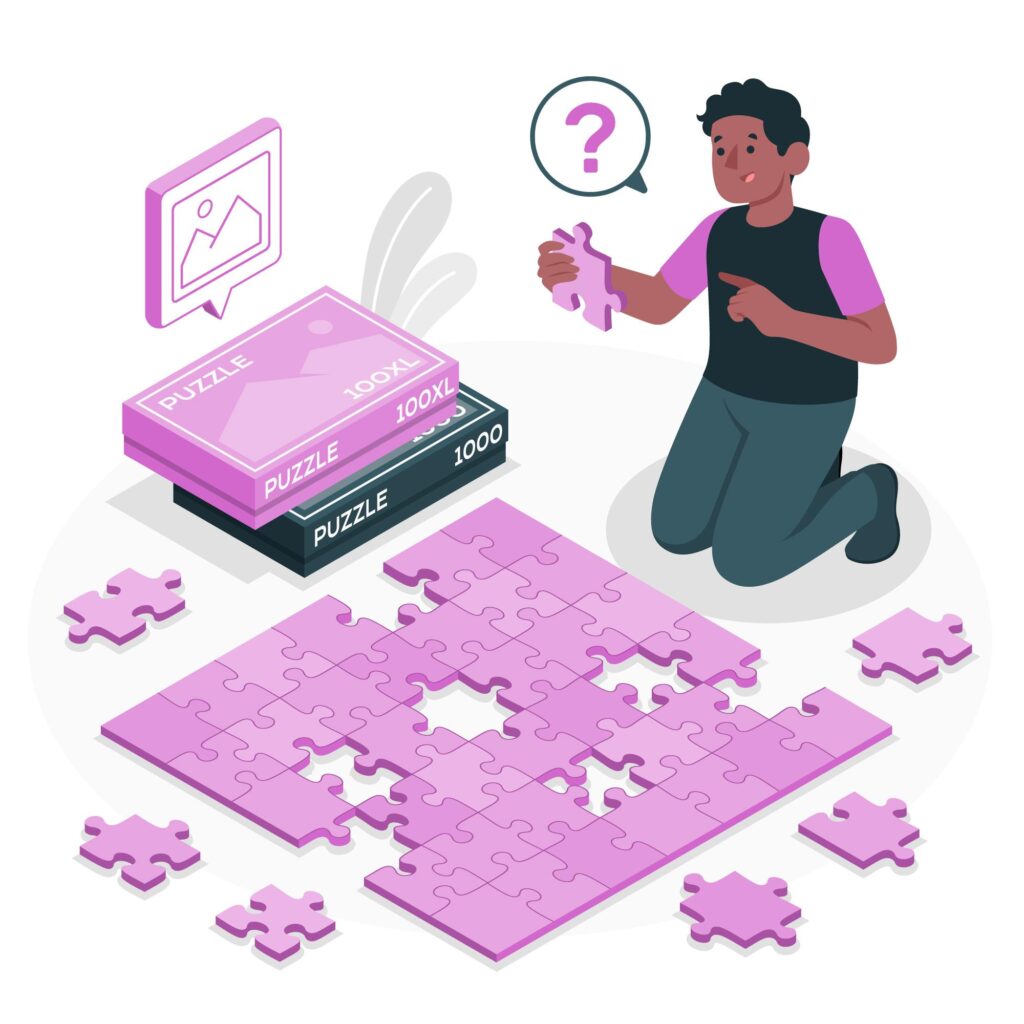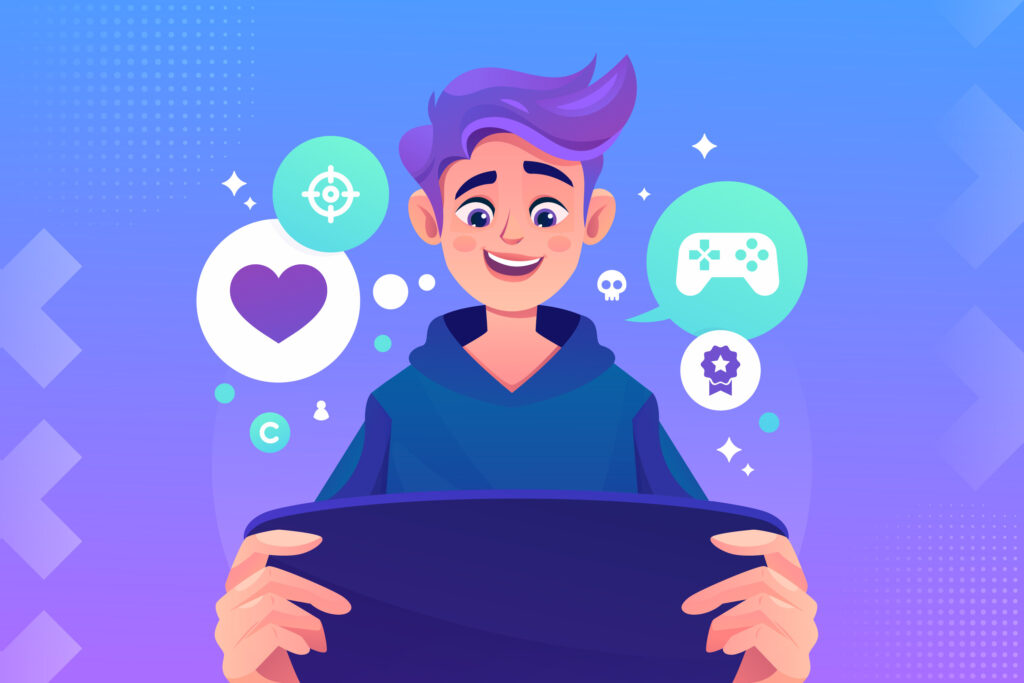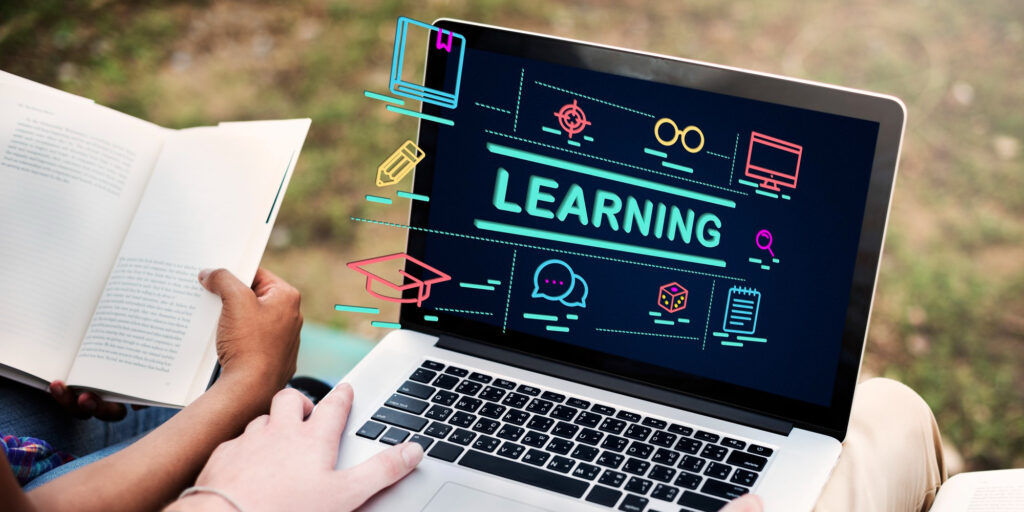Let’s revisit the time when you were a child – during all your phases of development, from toddler to young adulthood or even today for some, games covered a significant portion of our lives. That’s because learning through play came naturally to us as a way to acquire new skills, knowledge, and experiences in an engaging and enjoyable manner. This inherent ability to learn while having fun shouldn’t be left behind as we grow older, especially in professional settings.

Childhood learning from games encompasses cognitive, social, and emotional development. Games necessitate problem-solving, critical thinking, and decision-making, honing skills applicable in real life. They enhance hand-eye coordination and fine motor skills, particularly in video games and sports, through repeated gameplay. Social interaction in role-playing games fosters communication, cooperation, and negotiation skills.
Games can evoke a range of emotions, from excitement and joy to frustration and disappointment. Through gameplay, we learned to manage their emotions, cope with challenges, and persevere in the face of adversity.
Games have always been a fun way to learn. Organizations now extensively use gamification in learning for increased engagement, motivation, and progression. It provides immediate feedback, enhances retention, and offers customization.
Why Learn Through Play?
In today’s fast-paced and ever-evolving workplace, traditional training methods often struggle to capture and sustain employees’ attention and motivation. This is where learning through play comes in – the innovative use of game elements and design principles in non-game contexts like organizational training. Research suggests that gamification can be a game-changer (pun intended) in enhancing learning outcomes and engagement.
Makes Training Fun and Personalized
Gamification has the power to transform mundane training sessions into interactive, personalized experiences that pique learners’ interest and involvement. By infusing elements of play, competition, and reward systems, organizations can tap into employees’ innate desire for achievement and progress, making the learning journey more enjoyable and immersive.

Provides Meaningful Feedback and Motivation
One of gamification’s strengths lies in its ability to deliver immediate and meaningful feedback to learners. Points, badges, leader boards, and other game mechanics not only reinforce learning but also motivate employees to continuously improve and strive for excellence. A study by Landers and Callan (2011) found that gamification, which facilitates learning through play, increased employees’ feedback-seeking behavior by an impressive 27%.
Fosters Community and Collaboration
Gamification can foster a sense of community and friendly competition among learners, enhancing their social and creative skills. Collaborative game elements encourage teamwork, problem-solving, and knowledge sharing, creating a vibrant learning environment where employees can learn from and support one another. For example, a study found that gamification increased the collaboration and innovation of employees in a crowdsourcing platform by 12%.
Proven Benefits and Outcomes
The impact of gamification on organizational training is backed by empirical evidence. A study conducted on Gamified Learning in Public Sector Organizations found that –
- Participants in a gamified training module scored significantly higher on learning assessments compared to those who went through regular training, indicating improved knowledge retention and application.
- Trainees expressed higher enjoyment levels and a more favourable perception of gamified training compared to traditional methods.
- Gamification indirectly influenced learning and reactions by increasing learner motivation, highlighting its ability to drive greater participation and engagement.
As organizations continue to prioritize employee development and upskilling, gamification presents a compelling opportunity to revitalize training programs and unlock the full potential of their workforce.
How Can You Integrate Learning Through Play?
Gamification in organizational training is gaining traction, but specific factors determine whether the implementation succeeds or falters. According to a recent study, organizations must carefully consider the following elements to ensure gamification enhances the training experience:
Staff Demographic Characteristics
An organization cannot adopt a one-size-fits-all approach to gamification. They must account for the diverse demographics of their staff, including age, gender, education levels, and cultural backgrounds. These factors significantly influence individuals’ preferences, expectations, and receptiveness towards gamified training methods.
Availability of Infrastructure and Facilities
Successful gamification requires adequate infrastructure and facilities. The organization needs to invest in the necessary resources and support systems to implement and maintain gamified training processes effectively. Without a solid technological backbone, the entire initiative may crumble.

Staff Information Literacy
Gamification relies heavily on technology, so staff must possess sufficient skills and knowledge to navigate and leverage the gamified systems seamlessly. Organizations should provide comprehensive training and resources to ensure staff can access and utilize the required information effortlessly.
Staff Attitudes Toward Gamification
If staff perceives gamification as a gimmick or a waste of time, they are unlikely to engage fully. Organizations must foster a positive, open-minded culture where staff views gamified learning as a valuable, enjoyable, and effective approach to personal and professional development.
Management Attitudes Toward Gamification
Top-level support and commitment are critical for gamification’s success. Management needs to develop a clear vision and strategy for gamification, effectively communicating its benefits and expectations to staff and stakeholders alike.
Gradual Inclusion of Gamification
Introducing gamification abruptly can overwhelm and alienate staff. Instead, organizations should adopt a gradual, progressive approach, allowing ample time for staff to adapt and adjust to the new learning methods.
Rich Learning Content
Ultimately, the training content itself must be relevant, meaningful, and engaging for the staff. While gamification can enhance the learning experience, it should never distract from or overshadow the core learning objectives and goals.
By addressing these factors proactively, organizations can increase the likelihood of gamification initiatives resonating with staff and yielding the desired results. Neglecting any of these elements, however, may undermine the entire effort and lead to disengagement or outright rejection of the gamified training approach.
Benefits of Gamification over Traditional Training
Traditional training methods often fail to sustain learners’ engagement and motivation. Learning through play, however, taps into our innate desire for exploration and achievement. Let’s take a quick look at how organizations can benefit with gamification –
Increased Engagement and Motivation:
- Points, badges, and leader boards: Create a sense of competition and achievement, leading to higher engagement and motivation.
- Storytelling and interactive elements: Make learning more immersive and enjoyable, leading to longer attention spans and better knowledge retention.
- Immediate feedback and rewards: Reinforce positive behaviour and encourage continued learning.

Enhanced Knowledge Retention and Transfer:
- Active learning through challenges and simulations makes learning more relevant and applicable to real-world scenarios.
- Personalized learning paths cater to individual learning styles and needs, leading to deeper understanding.
- Repetition and gamified practice reinforces key concepts and improves knowledge retention.
Improved Productivity and Performance:
- Increased employee engagement and motivation leads to higher productivity and better performance.
- Targeted practice and feedback helps employees develop specific skills needed for their roles.
- Collaborative learning experiences foster teamwork and communication skills, improving overall performance.
In an era where employee engagement, continuous learning, and skill development are paramount, organizations can no longer rely solely on traditional training methods. Embracing gamification and learning through play offers a powerful solution to revitalize training programs and unlock the full potential of the workforce. By tapping into the inherent human desire for achievement, competition, and enjoyment, gamified learning experiences can increase motivation, knowledge retention, and overall satisfaction with the training process.
Organizations that prioritize and invest in gamification strategies will not only enhance their training outcomes but also foster a culture of continuous learning, innovation, and personal growth, positioning themselves as industry leaders in talent development and employee satisfaction.